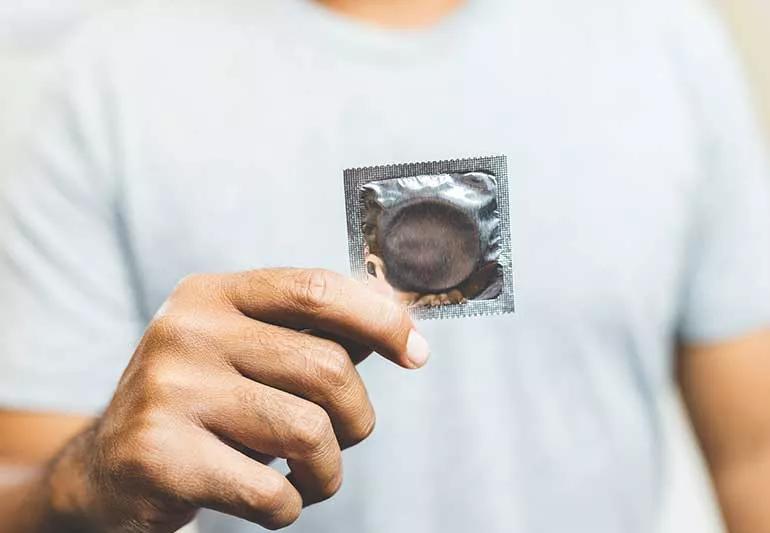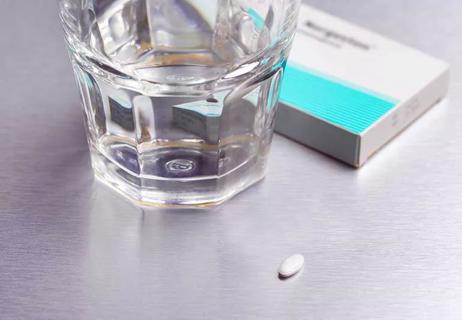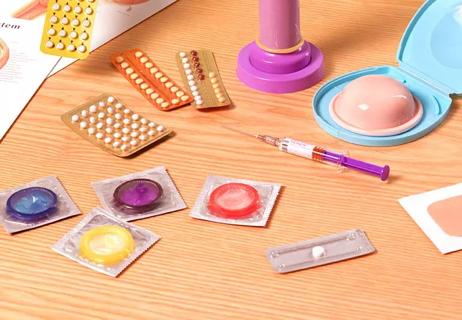Most condoms will fit most people, but other factors matter, too

You may already know that condoms are your best way to reduce the spread of sexually transmitted infections (STIs, also called sexually transmitted diseases or STDs).
Advertisement
Cleveland Clinic is a non-profit academic medical center. Advertising on our site helps support our mission. We do not endorse non-Cleveland Clinic products or services. Policy
And if you didn’t already know it, let’s say it again: Condoms — the ones made from latex, polyurethane and other synthetic materials — will reduce your chances of getting chlamydia, gonorrhea, herpes, syphilis, HIV/AIDS and other infections that can be passed through bodily fluids. (Lambskin condoms, also called natural membrane or lambskin condoms, can allow viruses to pass through.)
Condoms can also prevent pregnancy by blocking semen during vaginal intercourse. That’s true of both synthetic and natural condoms.
There are two general categories of condoms:
Which external condom is right for you? Well … that may be a little complicated. Those oh-so-useful infection-stoppers are a huge market, and there’s a lot to consider: size, material, thickness and enhancements (“for your pleasure”) among them. There are also U.S. Food and Drug Administration (FDA)-approved external condoms on the market specifically for use during anal sex.
When it comes to choosing condoms, is there a right answer? Does condom size matter? And the rest of it?
Advertisement
We talked with urologist Petar Bajic, MD, about whether condom size matters and other factors to consider.
Here’s the bottom line: The best condom for you is one that you’ll use and will keep you and your partner protected for the duration of sexual activity.
Research shows that when people aren’t satisfied with their condom fit, they’re more likely to have less sexual satisfaction and to remove the condom and complete their sexual engagement without it. Kind of defeats the purpose.
In truth, most people will find that most condoms will fit just fine, Dr. Bajic says.
A worldwide review of research studies found that the average erect penis length is about 5.2 inches. Average girth is 4.6 inches when erect. Guidelines from the U.S. Food and Drug Administration (FDA), which regulates condoms as a medical device, stipulate that the minimum length for external condoms is 160 millimeters (that’s about 6.3 inches).
That leaves some room for the condom to remain rolled at the base for the average-sized penis. Trojan®, for example, lists their standard condom as the proper-fitting choice for a penis between 5 and 7 inches long with a girth of 4 to 5 inches.
“For the vast majority of people, standard sizes are appropriate, but everyone’s anatomy is different,” Dr. Bajic notes. “It’s best to read the information from that specific condom manufacturer for their guidance on how to determine the best fit for you, and that information should be readily available on the packaging.”
The measurements listed on condom packaging are based on measuring a fully erect penis. To get your size, use a flexible tape measure. Length is the measurement from the base of your penis (where it meets your stomach) to the tip. Girth is the measurement around the widest part of your penis shaft.
Now, whether the condom is the right size according to the manufacturer’s standards and whether it feels good to your liking may be two different things.
It’s kind of like picking out a pair of jeans. Sure, there’s no shortage of pairs that’ll cover you from hip to ankle, but you may find certain brands or certain cuts to be more comfortable. Maybe you’re the straight-leg type or perhaps bootcut is more your jam. Nothing wrong with being a little choosy.
The same is true of condoms. Any number of them may fit, but it might take trying out a few kinds to determine what you prefer. There are a lot of options out there. So, if you don’t like one, there are plenty of kinds to try and find what works best.
You can try different types of material (remembering that some people may be allergic to latex, so steer clear if that’s a concern for you or your partner). You can also try different material densities. Some condoms are marketed as being “ultra-thin” and the like, which could increase sensation. The minim thickness, per the FDA, is 0.3 mm.
Advertisement
While most condoms will do the trick for most people, severely ill-fitting condoms could be problematic. A condom that’s too big could fall off during sexual activity. Too small, and you could be at risk of it breaking, Dr. Bajic warns.
“The important thing is to be realistic,” he continues. In other words, choosing a condom isn’t a time to … ahem … stroke your ego, if that’s not what your anatomy calls for.
A properly fitted condom will cover your penis snuggly (but not too tightly) from tip to base, with a half-inch reservoir at the tip. For some people, that may leave an extra bit of rolled condom at the base. That’s OK, and some people prefer that feeling. But if it doesn’t reach to the base of your penis near your stomach, that’s a clear sign to try a bigger size.
| What you may notice | What to try |
|---|---|
| The condom doesn’t reach to the base of your penis. It doesn’t leave room for a reservoir at the tip. It slips off. It breaks. It’s uncomfortably tight. | Consider going up a size. |
| There’s excessive rolled condom at the base of your penis. You have decreased sensation. It slips off. | Try a smaller size. |
| It’s uncomfortably tight. | Try a larger girth. |
| You have decreased sensation. It slips off. | Try a smaller girth. |
| You have decreased sensation. | Consider a thinner material. |
| The condom breaks. | Try a thicker material. |
| What you may notice | |
| The condom doesn’t reach to the base of your penis. It doesn’t leave room for a reservoir at the tip. It slips off. It breaks. It’s uncomfortably tight. | |
| What to try | |
| Consider going up a size. | |
| There’s excessive rolled condom at the base of your penis. You have decreased sensation. It slips off. | |
| What to try | |
| Try a smaller size. | |
| It’s uncomfortably tight. | |
| What to try | |
| Try a larger girth. | |
| You have decreased sensation. It slips off. | |
| What to try | |
| Try a smaller girth. | |
| You have decreased sensation. | |
| What to try | |
| Consider a thinner material. | |
| The condom breaks. | |
| What to try | |
| Try a thicker material. |
An oft-repeated reason for not wanting to wear a condom is that your penis is “too big.” In reality, condoms are made to stretch. A lot. So, there’s bound to be a condom out there that fits you. (There are videos online of people fitting their whole leg into a condom. Trust us, it’ll fit.)
On the other side of the coin, the condom market is flooded with options, so chances are you’re not “too small” for a condom, either.
Advertisement
Again, “fitting” to the point that it’s safely in place and won’t slip off or break and “fitting” to your liking may have some slight differences. But the point is there’s a condom out there that’ll protect you and your partner from STIs and unwanted pregnancy in the case of vaginal sex. And there’s very likely a choice that you’ll feel good using, too.
“The only better way of preventing sexually transmitted infections than using a condom is abstinence,” Dr. Bajic states. “So, if you plan on engaging in sexual activity, it’s really important to protect yourself, and use barrier contraception.”
Advertisement
Learn more about our editorial process.
Advertisement

Turn to emergency birth control and STI tests

Stay away from hand lotion and honey, but coconut oil can do the trick

Yes, there is a condom that will fit

Mpox (monkeypox) is transmitted through skin-to-skin contact, including sex

Go for latex-free options if you experience sensitivity

‘Safer sex’ means STI prevention, avoiding unintended pregnancies and psychologically safe practices for everyone

Type 2 diabetes isn’t inevitable with these dietary changes

Applying a hot or cold compress can help with pain